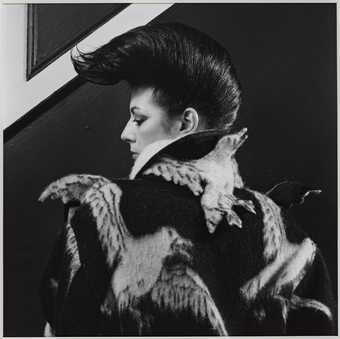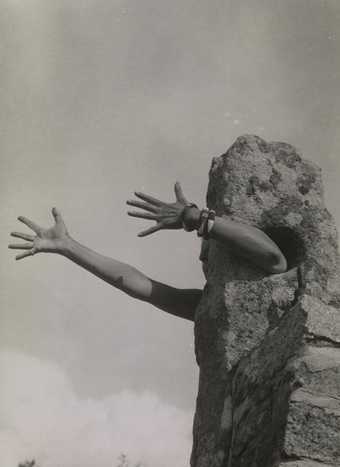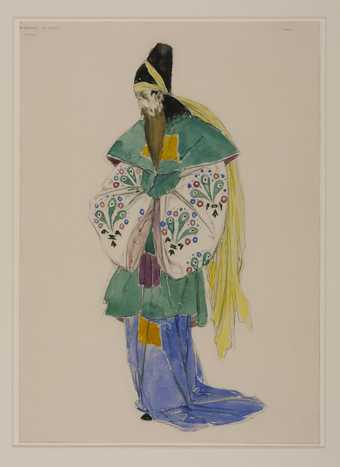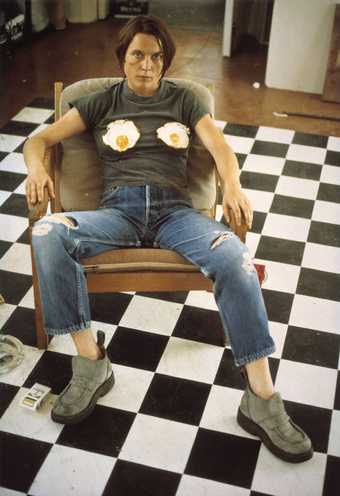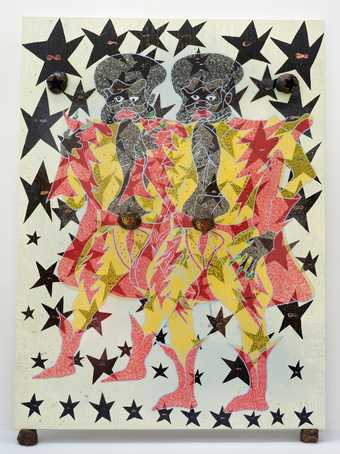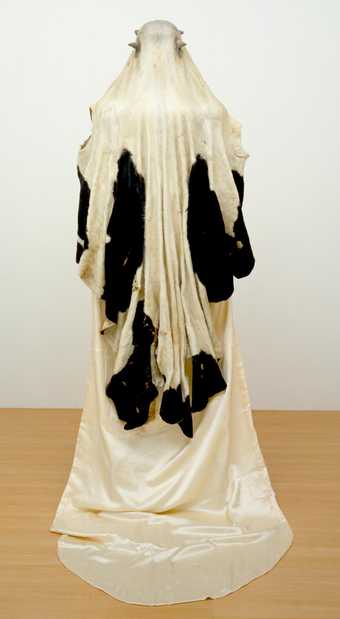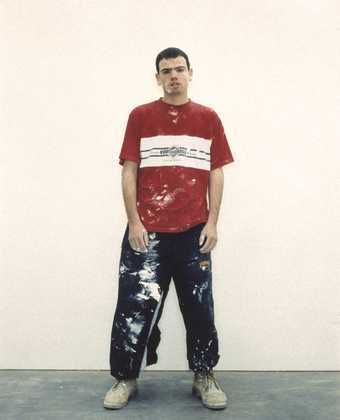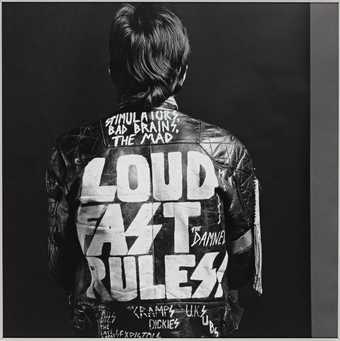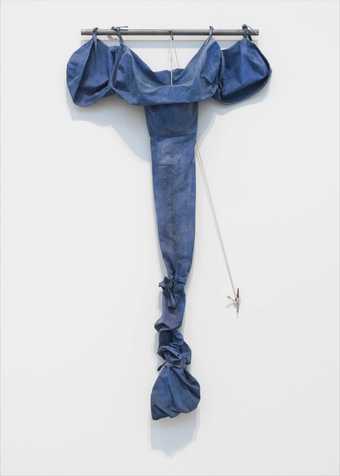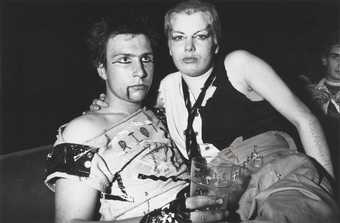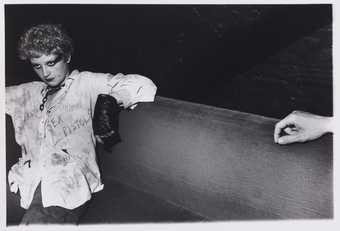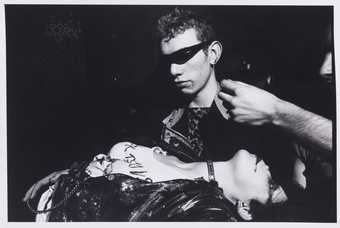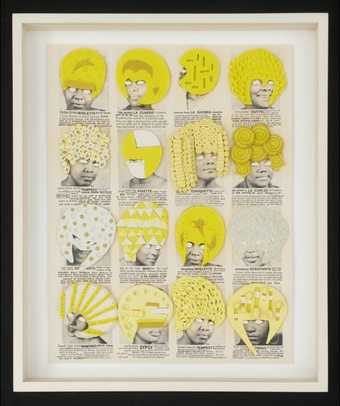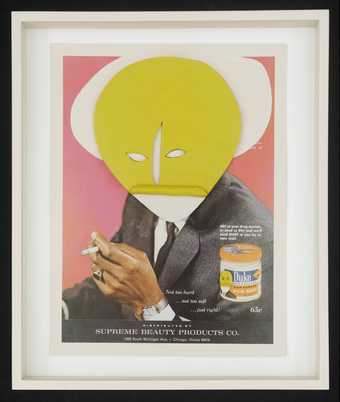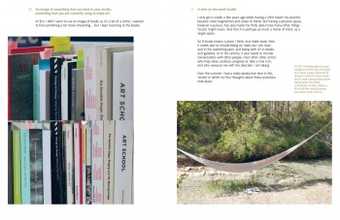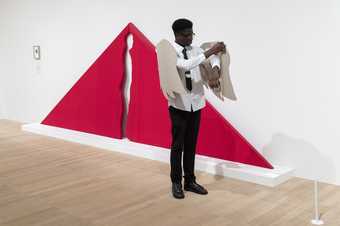We wear it every day. We like looking at it in magazines. We shop for it and dress up to go out in it…but can clothing be art?
Express yourself: clothing and identity
What does what we wear say about who we are? Clothes are usually something we choose – so they reflect colours and styles that we like. But they say more about us than just our fashion tastes. They can suggest how old we are, where we grew up, what music we like, our attitudes to life and what we believe in.
For their Punks photo series, Karen Knorr and Olivier Richon photographed young people in London nightclubs in the 1970s. Their clothes, customised with chains, rips and writing, reflect their punk identities. We immediately get an idea about the sort of music they like. We can probably guess what they felt about conventional society.
Portrait painters have used clothes and accessories to share the identities of the people they paint for centuries. Peter Blake has used clothes and accessories in his Self-portrait with Badges 1964 to provide us with some clues about him. His jeans and denim jacket are covered in badges. He is holding a magazine with Elvis on the cover. These things tell us he is into American culture and rock music. What clothing and accessories would you paint yourself in, to suggest what you’re into?
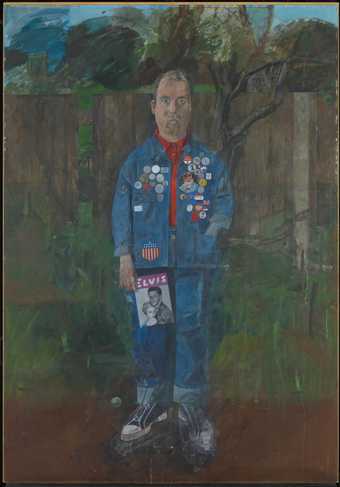
Peter Blake
Self-Portrait with Badges
(1961)
Tate
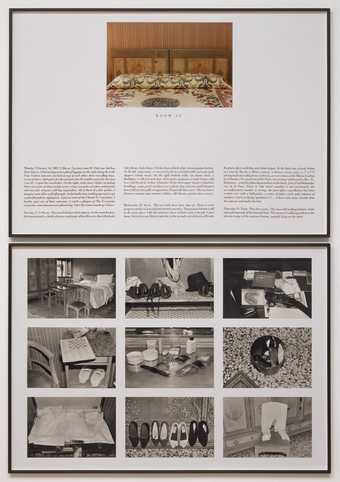
Sophie Calle
The Hotel, Room 28
(1981)
Tate
Conceptual artist Sophie Calle used clothing to try and work out who people were – without seeing them! For her Hotel Room series, she photographed people’s clothes and other things left in their hotel rooms. She then tried to guess what sort of people they were and what their lives were like.
Pawel Althamer has made a number of unusual self-portraits. In this self-portrait, it looks like the artist has got rid of his costume in a hurry. But the costume in question – a suit, briefcase and passport – is so anonymous that it represents a form of masquerade. It leaves us wondering where the real Althamer is.
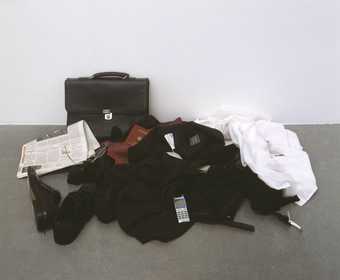
Pawel Althamer
Self-Portrait as a Businessman
(2002, with additions 2004)
Tate
stereotypes and inequalities in clothing
Some artists play with the idea of clothing as identity. They explore racial and gender issues and stereotypes using clothing.
Doll Clothes 1975 is a video by Cindy Sherman. It shows a paper cut-out doll coming to life and choosing clothes from a wardrobe of cut-out outfits to wear. After each outfit, a hand comes in and puts the doll back in her box. The work suggests the limited control that women have over their own identity. In works made after this, Sherman dresses up in various ‘disguises’ to explore different identities.
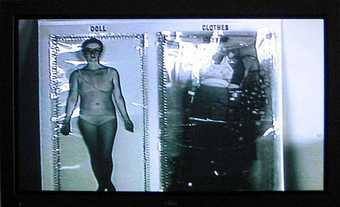
Cindy Sherman
Doll Clothes
(1975)
Tate
Sarah Lucas consciously makes use of what she thought of as her ‘masculine’ appearance and clothing in a series of confrontational self-portraits, made throughout the 1990s. Through them she presents an identity that challenges stereotypical representations of gender and sexuality. She poses as both tough but undignified, and macho but female – creating an image of defiant femininity.
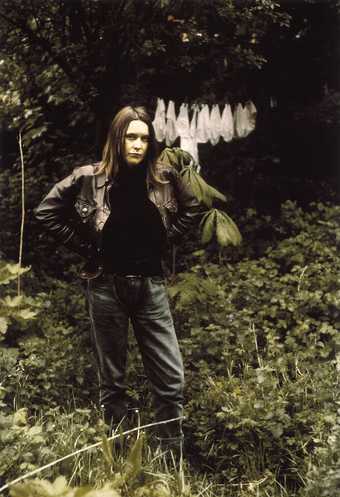
Sarah Lucas
Self Portrait with Knickers
(1994)
Tate
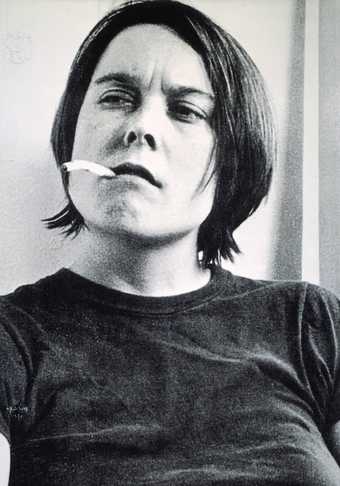
Sarah Lucas
Fighting Fire with Fire
(1996)
Tate
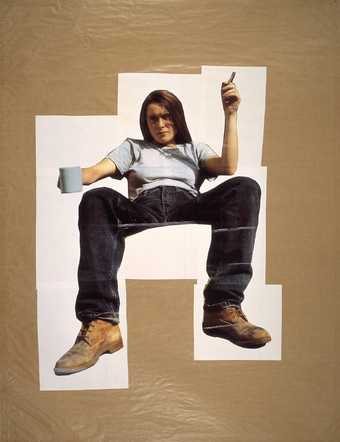
Sarah Lucas
Self Portrait with Mug of Tea
(1993)
Tate
Lorna Simpson and Ellen Gallagher use representations of women in African-American magazines to explore identity. They cut these images up, add paint, collage and layer them. By modifying images they explore and emphasise how identity is something that is often constructed. We are often told how we are supposed to look!
Watch Lorna Simpson talk about how she uses magazine images and adverts to explore identity in her art:
This film file is broken and is being removed. Sorry for any inconvenience this causes.
Jason Evans’s Strictly series, originally posed for a 1990’s i-D Magazine fashion editorial, blurs the lines between art photography, portraiture and fashion. This is what the artist said about the photographs:
Strictly was a weird mixture of macho clothes and quite effeminate clothes. Sportswear-based but classical English things, turned around. The syntax of clothes was turned completely upside down, and then, worn by black people, it was a new vision of Britain. We were trying to break down stereotypes.
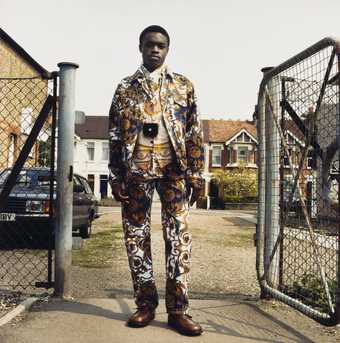
Jason Evans, stylist Simon Foxton
[no title]
(1991)
Tate
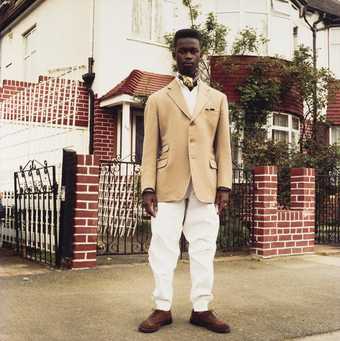
Jason Evans, stylist Simon Foxton
[no title]
(1991)
Tate
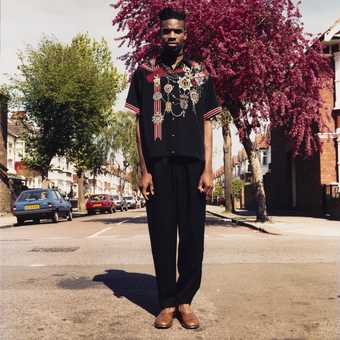
Jason Evans, stylist Simon Foxton
[no title]
(1991)
Tate
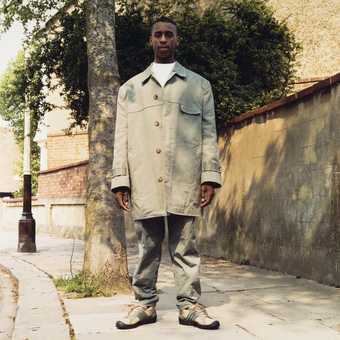
Jason Evans, stylist Simon Foxton
[no title]
(1991)
Tate
The photographs raise questions around representation, identity, influence and style.
The figure in Yinka Shonibare’s The Swing (after Fragonard) 2001 is based on an eighteenth century painting of a lady on a swing. Rather than wearing a frothy pink lacy dress as she does in the original painting, the figures dress is made from African fabrics. By dressing one the most famous flirts in art history in African print, Shonibare reminds us that identity is a construction. Playing with identities from various historical and cultural signifiers is a key theme in Shonibare’s work.
Feminist artist Margaret Harrison uses clothing to draw attention to the inequality and low pay. In Homeworkers 1977 she looks at these issues as faced by women who work from home. The canvas includes gloves, brooches, buttons, safety pins, and scarves. Next to them are their selling price, their production time and the money paid to their makers. The seven hands painted at the top symbolise the hard manual work women face in these jobs.
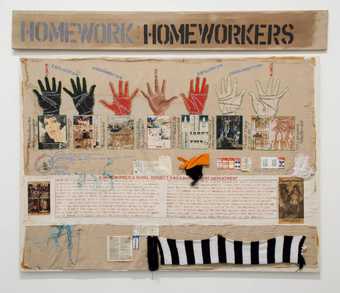
Margaret Harrison
Homeworkers
(1977)
Tate
Clothing with superpowers
Not all clothing is purely functional. Not all clothing is made to make us look good or express who we are. Some clothing is symbolic of super-powers – or designed to give us superpowers!
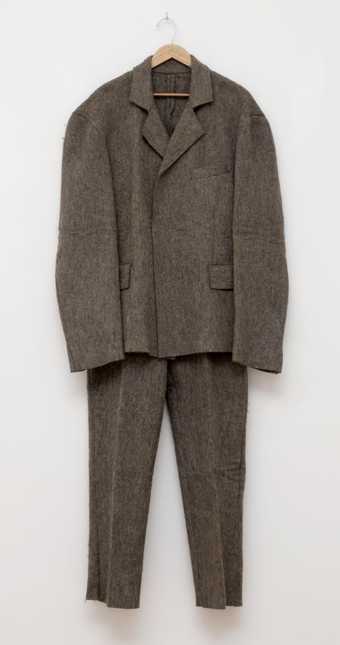
Joseph Beuys
Felt Suit
(1970)
ARTIST ROOMS Tate and National Galleries of Scotland
This may look like an ordinary, slightly boring felt suit. But did you know it has superpowers? Joseph Beuys often told the story of how, when he was a pilot during the Second World War, his plane crashed on the Crimean Front and he was rescued by Tartars. The Tartars covered him in fat and wrapped him in felt to protect him from the cold. He often used fat and felt in his art to represent warmth and protection.
Rebecca Horn’s body sculptures are clothing designed to change a how a person interacts with their environment. Her Finger Gloves alter her relationship with her surroundings. Objects that are far away come within the wearers reach. Designed to be strapped onto the face, Pencil Mask transforms the wearer’s head into an instrument for drawing:
I move my body rhythmically from left to right in front of a white wall. The pencils make marks on the wall the image of which corresponds to the rhythm of my movements.
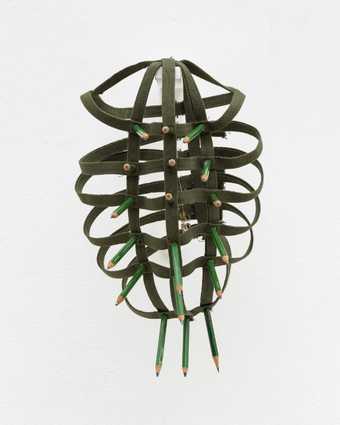
Rebecca Horn
Pencil Mask
(1972)
Tate
Texture, patterns, colours, and shapes
We don’t always have to think about what clothes mean, or what they say about us. We can just be inspired by their colours, shapes, patterns and textures!
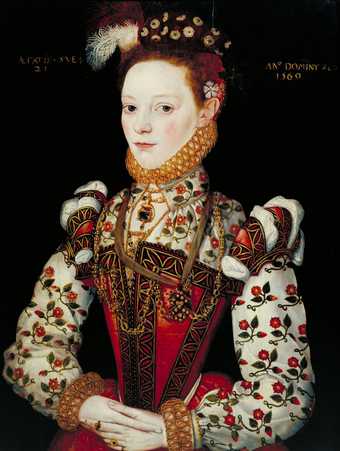
Unknown artist, Britain
A Young Lady Aged 21, Possibly Helena Snakenborg, Later Marchioness of Northampton
(1569)
Tate
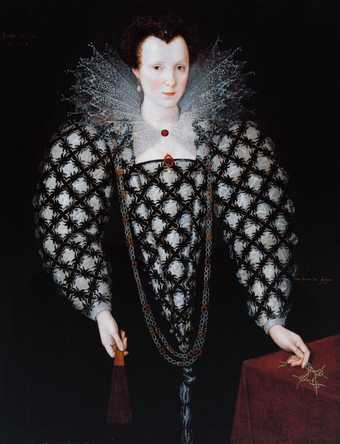
Marcus Gheeraerts II
Portrait of Mary Rogers, Lady Harington
(1592)
Tate
Have a look at this pair of portraits. The artists have meticulously painted the patterns and details of the dresses. Their ornate patterning and sculptural shapes could be an interesting starting point for artwork.
Arte povera artist Michelangelo Pistoletto uses the colours and textures of discarded clothing piled up for his Venus of the Rags 1967.
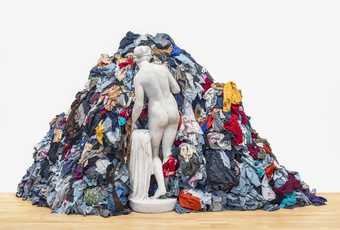
Michelangelo Pistoletto
Venus of the Rags
(1967, 1974)
Tate
Interested in shape and form? Richard Deacon used a shoe to inspire the shape of his sculpture If the Shoe Fits 1981.
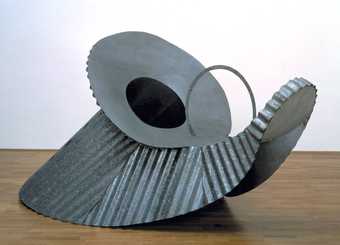
Richard Deacon
If The Shoe Fits
(1981)
Tate
Art vs. fashion
Artists sometimes also design clothing. The patterns and shapes used in art becomes fashion in the hands of Sonia Delaunay and Yayoi Kusama. Delaunay is well-known for her colourful abstract paintings. She also designed clothes which combine the geometric shapes of her abstract art with fashion.

Sonia Delaunay Electric Prisms 1913
Davis Museum at Wellesley College, Wellesley, MA
Gift of Mr. Theodore Racoosin
© Pracusa 2014083
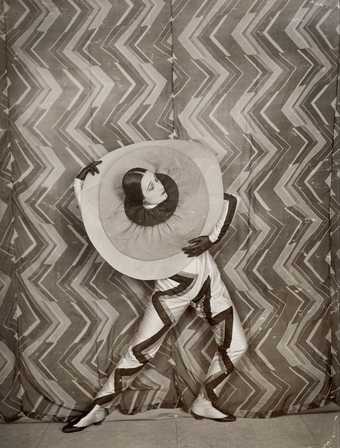
Wearing the Pierrot-Éclair costume designed by Sonia Delaunay, on the set of René Le Somptier’s film Le P’tit Parigot 1926
© Bibliothèque nationale de France, Paris
Yayoi Kusama is often referred to as the ‘princess of the polka dot’. This is because much of her artwork features dots or spots. In the late 1960s she began to paint dots directly onto people. The next logical step was to translate the shapes and forms from her artworks into clothing, so she set up her own fashion label. People could become walking artworks!
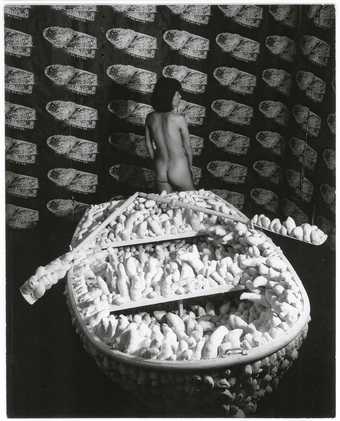
Yayoi Kusama posing at her Aggregation: One Thousand Boats show installation in the Gertrude Stein Gallery, New York 1963
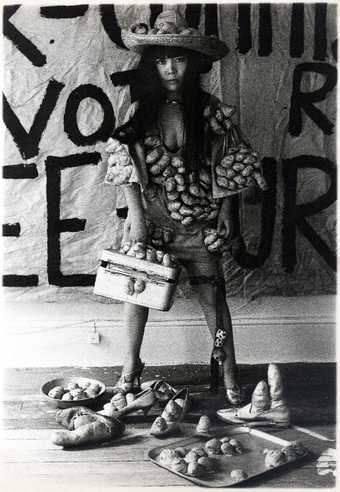
© Yayoi Kusama/ Yayoi Kusama Studio, Inc
have a go
We’ve pulled together some thoughts to help you get started researching clothing as a theme:
- What clothing and accessories reflect your interests and character? Document these using photographs, video or sketches and use these to create a self-portrait. This could be a representational self-portrait like Peter Blake’s Self-Portrait with Badges or a ‘virtual’ self-portrait using photographs and notes.
- What does clothing say about other people? Do you ever try and imagine someone else’s life or character by what they’re wearing?
- Research depictions of people in the media. Explore how clothes are used to create stereotypes
- Look again at Rebecca Horns’s body sculptures. Design an item of clothing or outift that gives you superpowers!
- Research patterns, shapes, and textures found in clothing and use them as the starting point for an abstract painting or sculpture.
- Explore clothing in Tate’s collection for inspiration).
- How could you use fashion to inspire an art project? Create a fashion range based on artworks.

